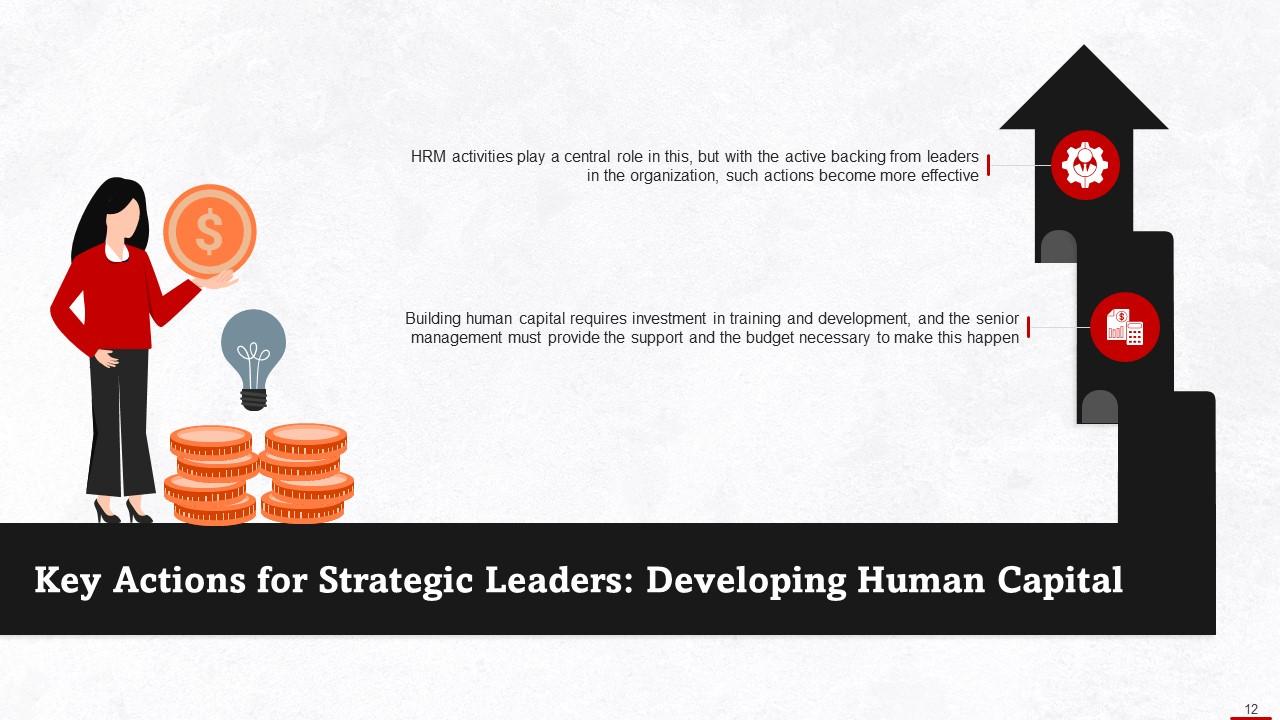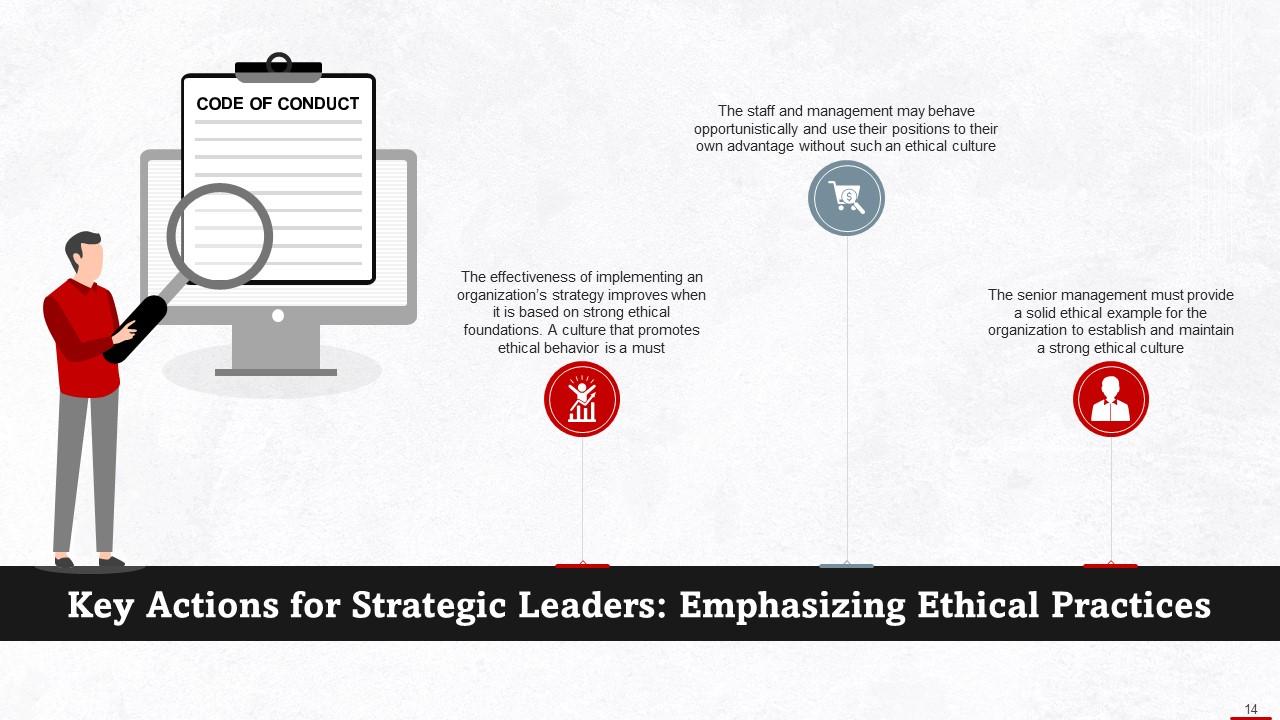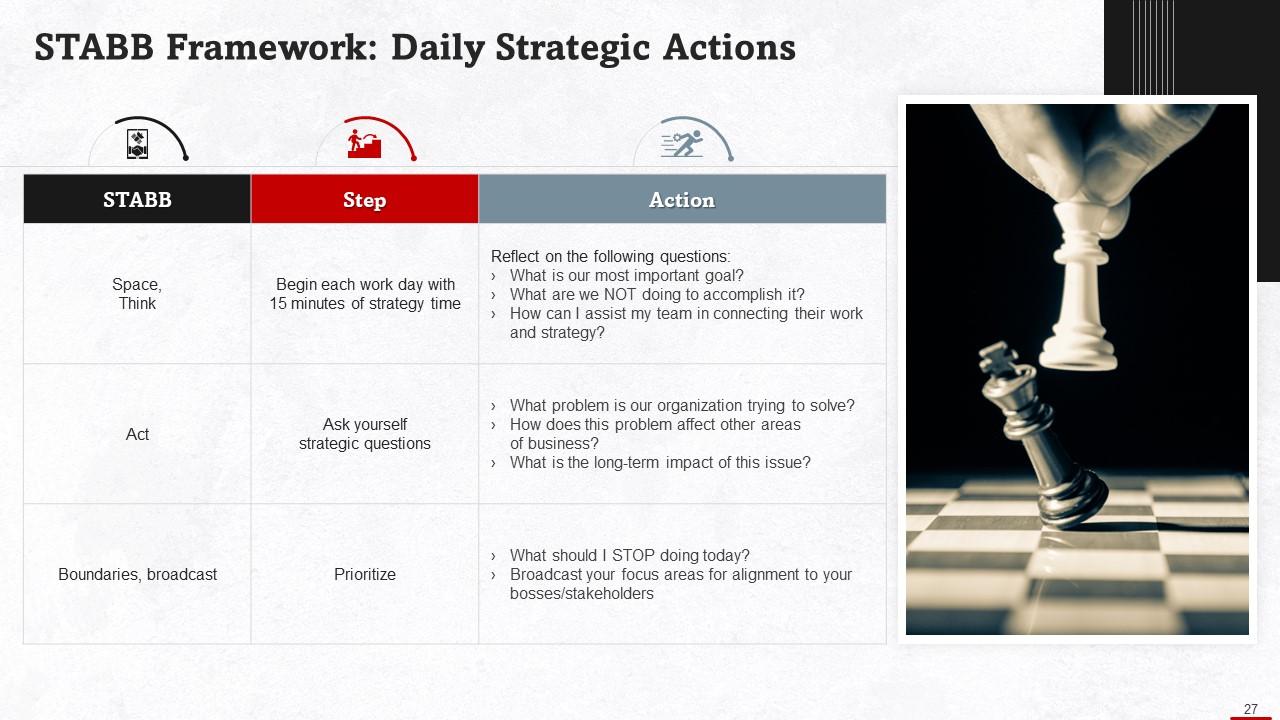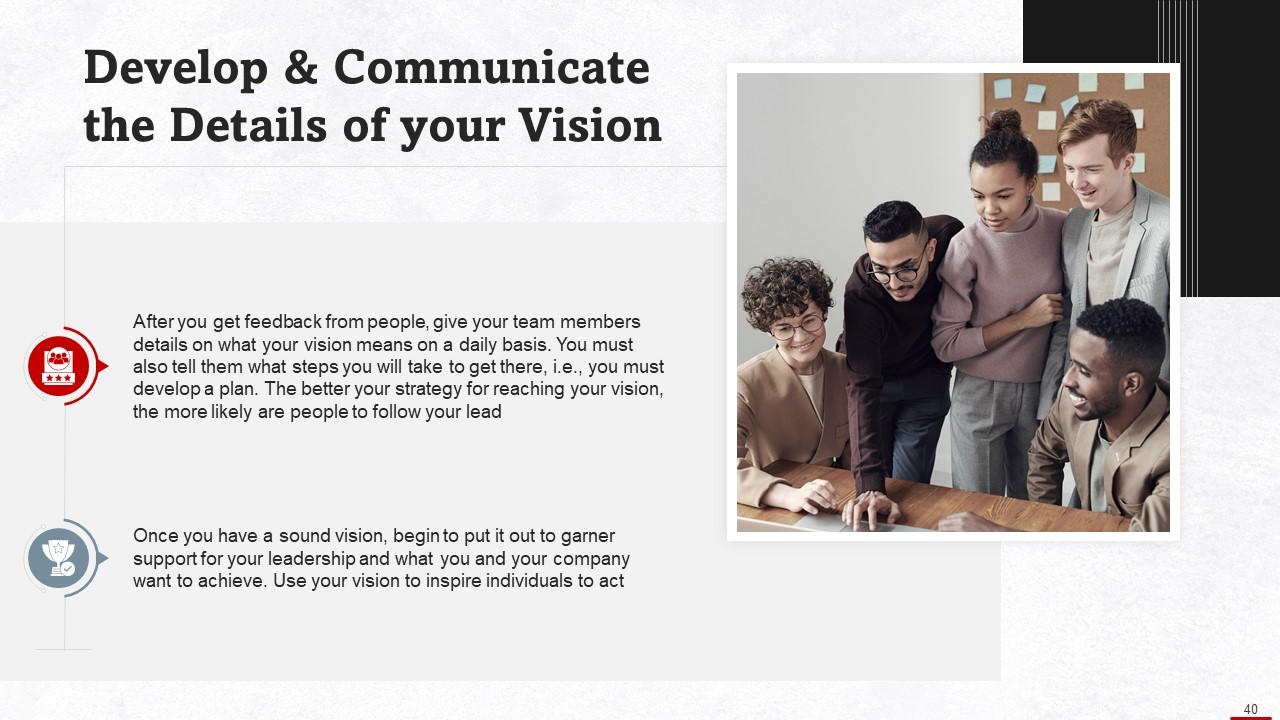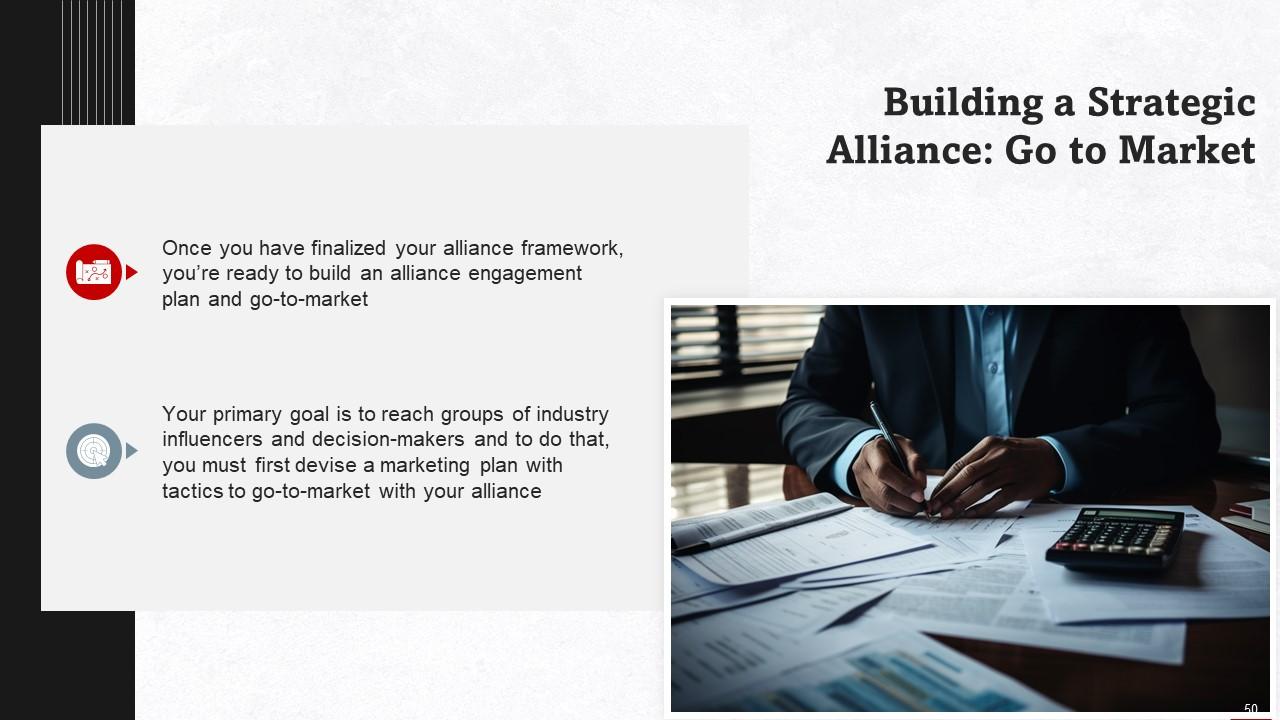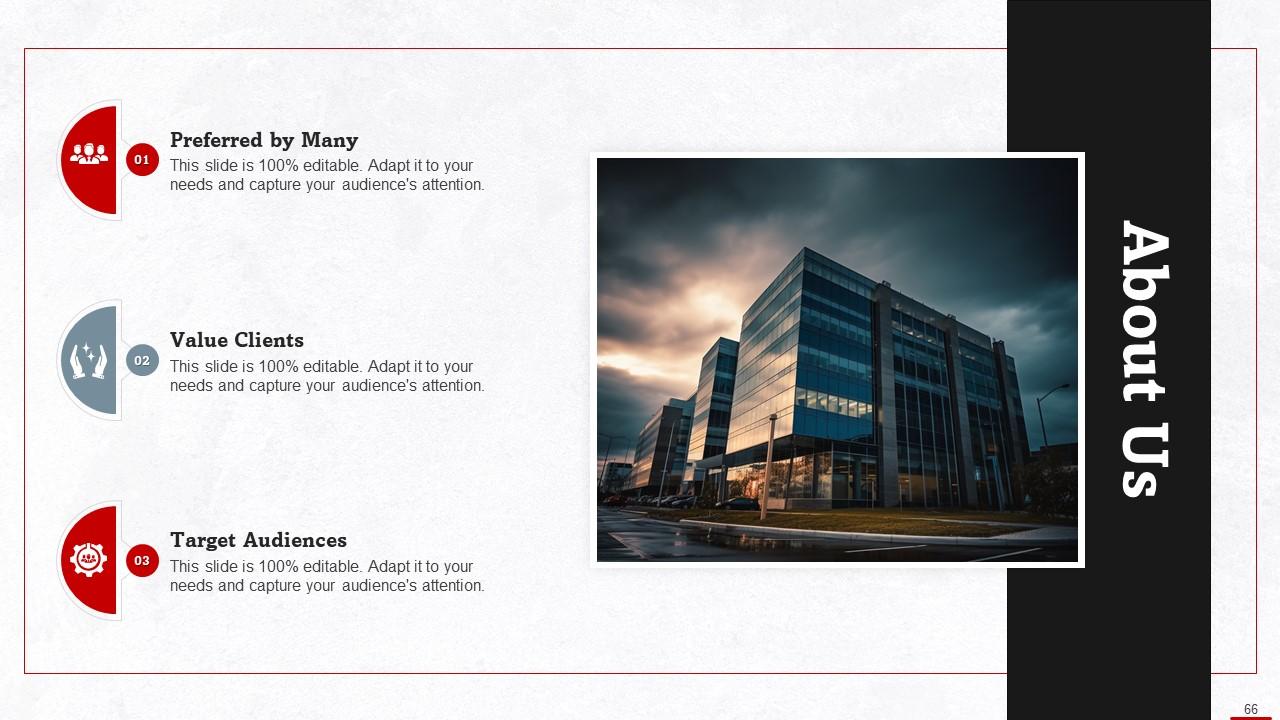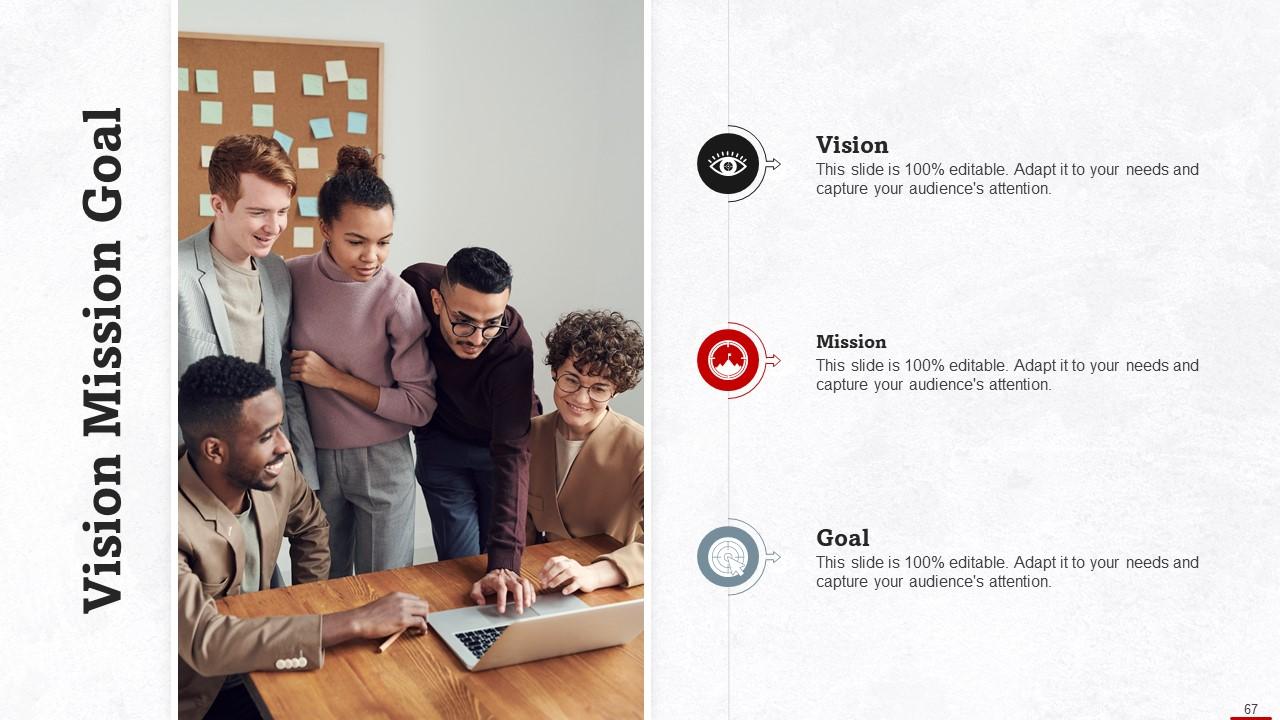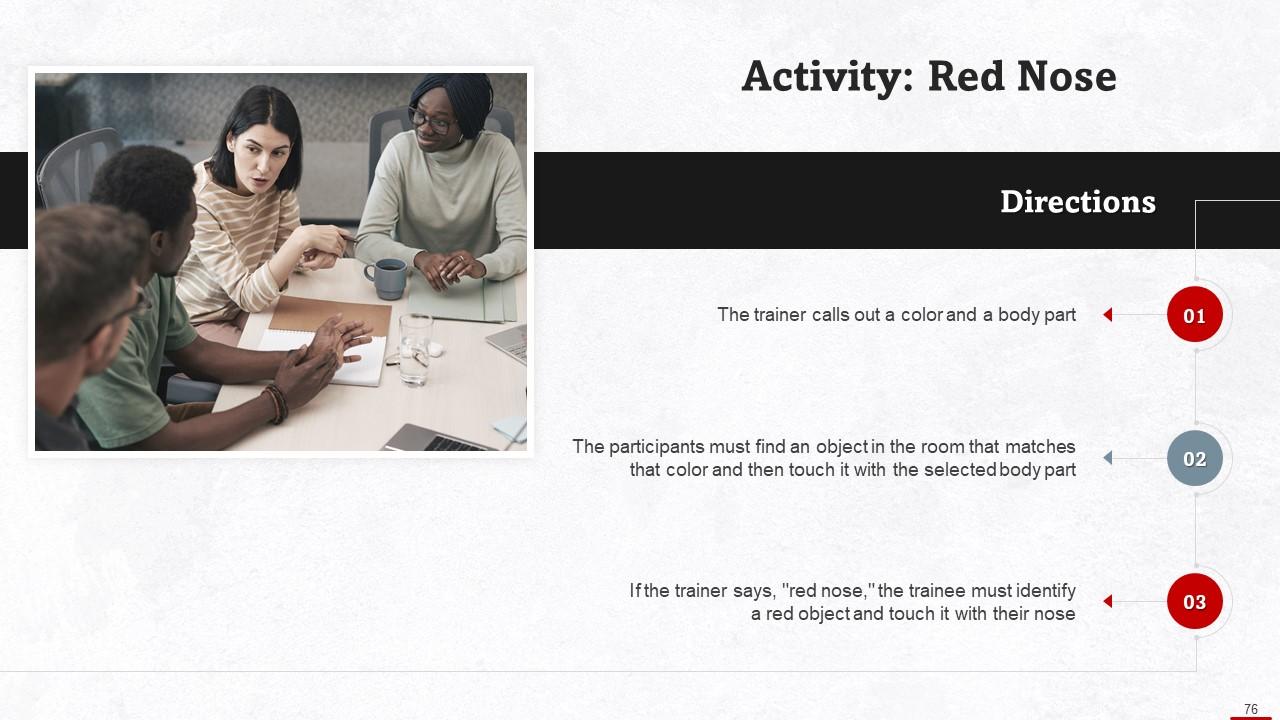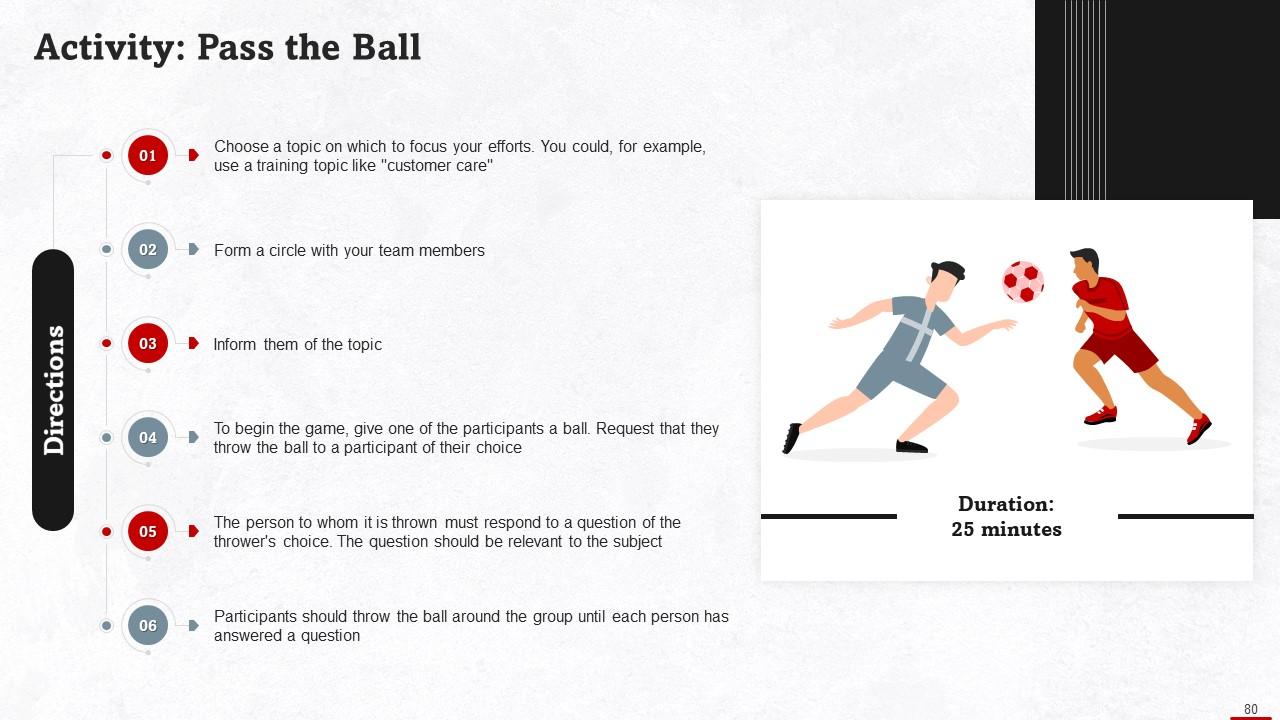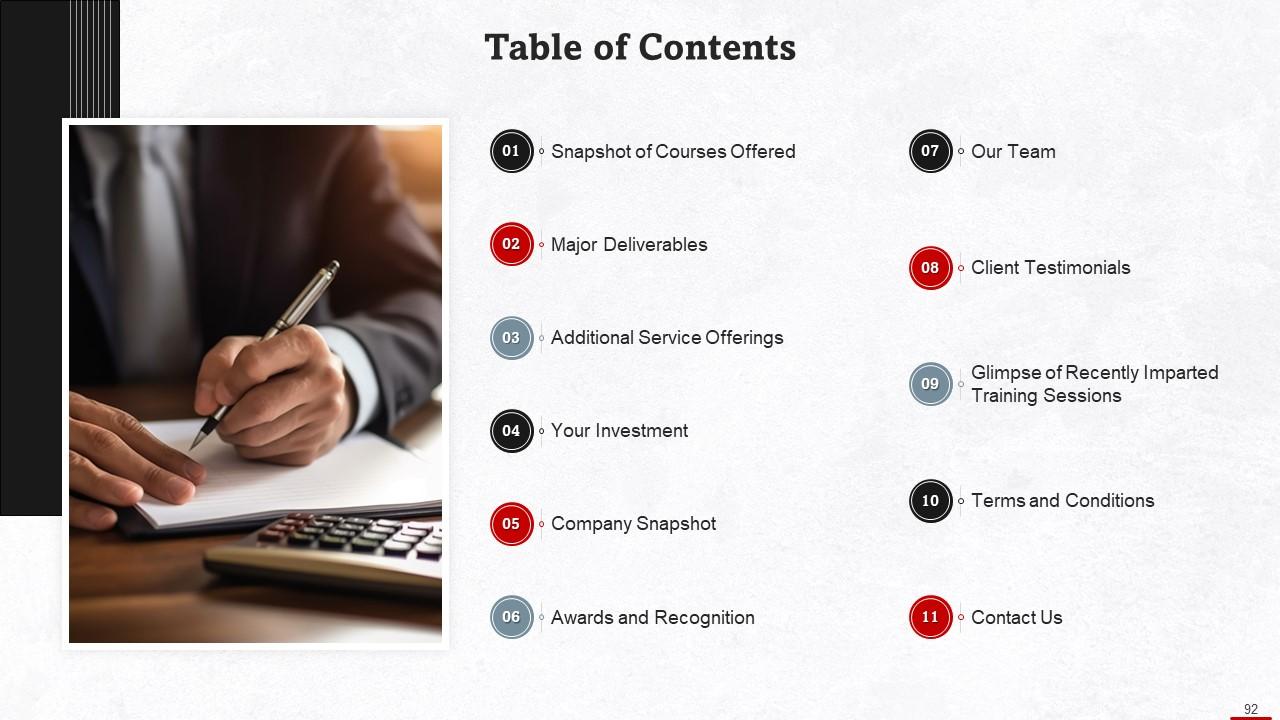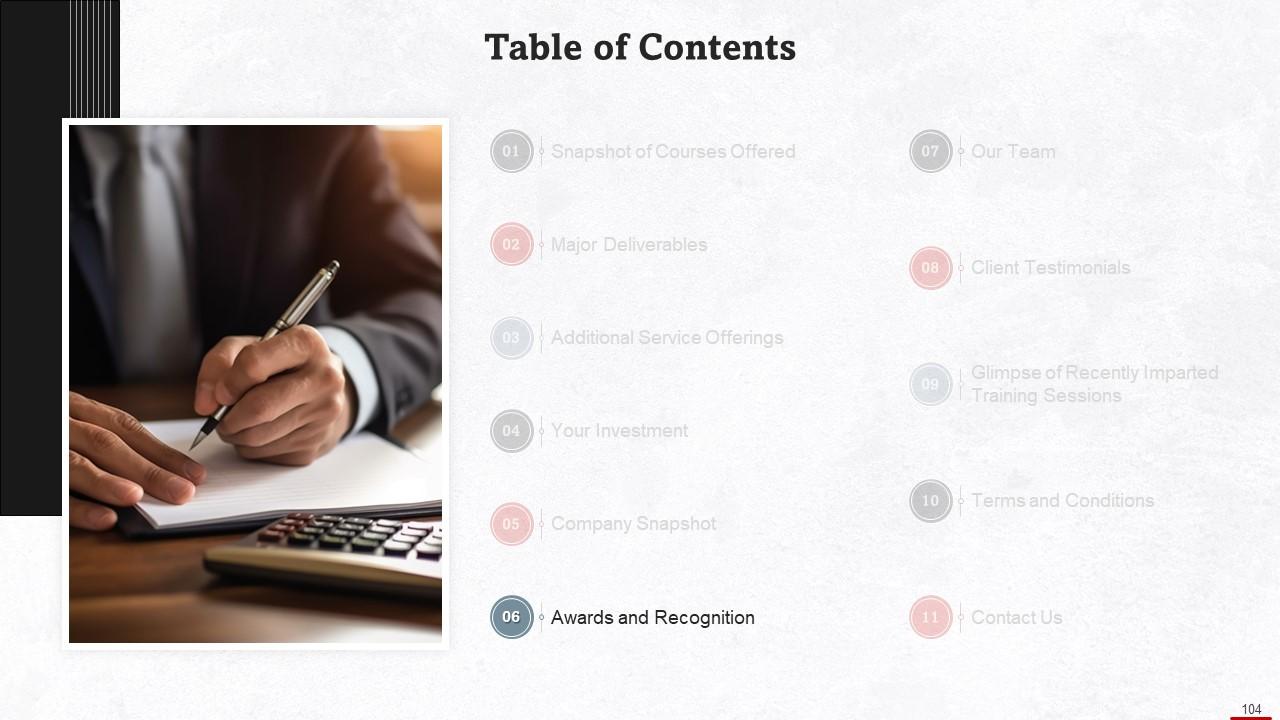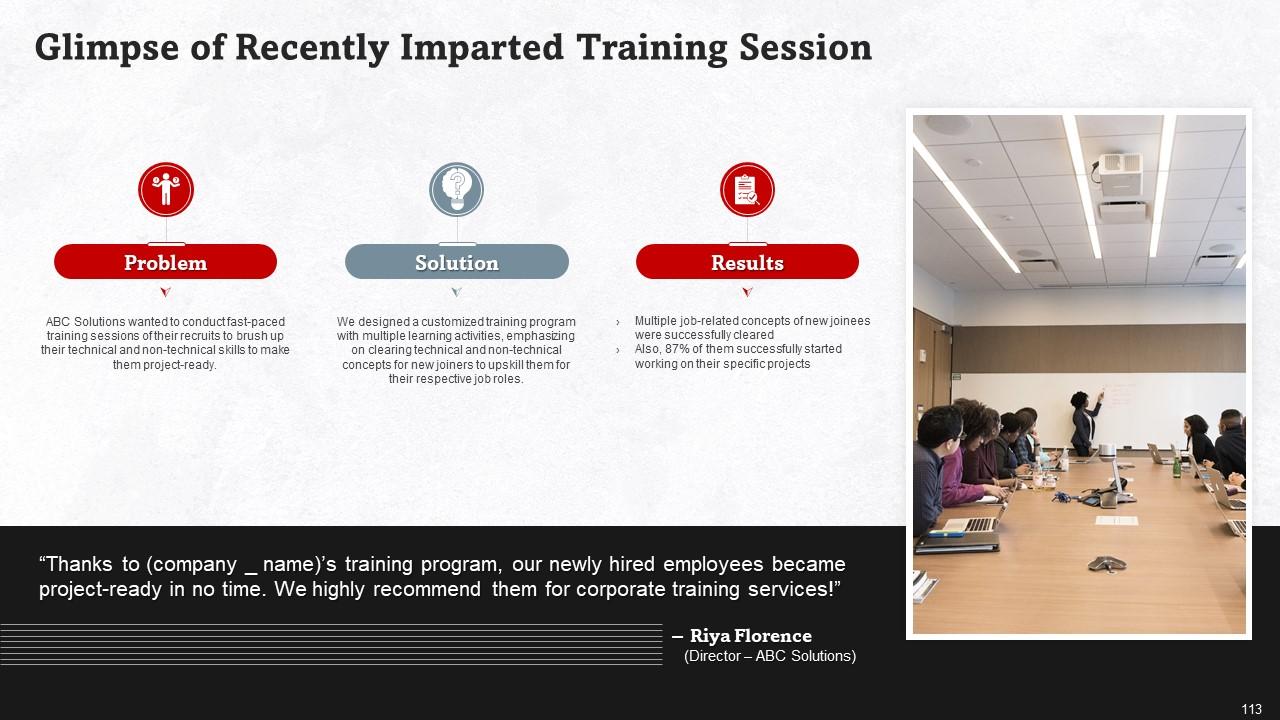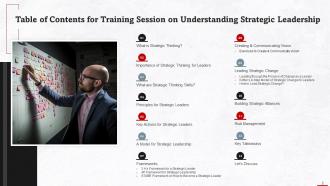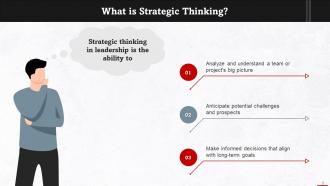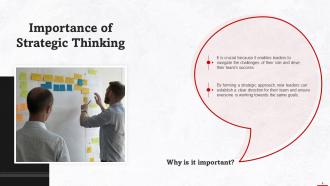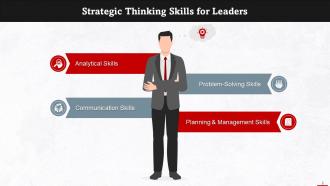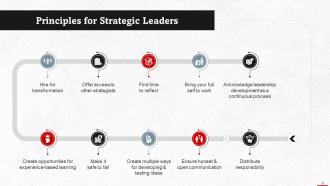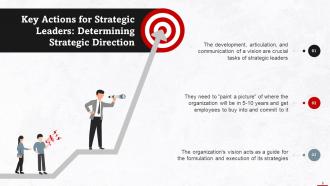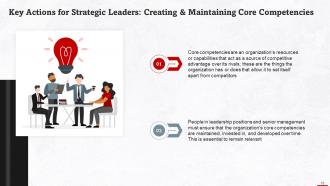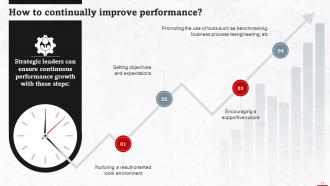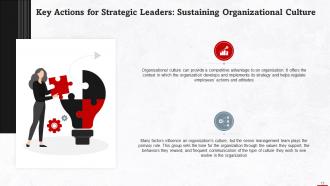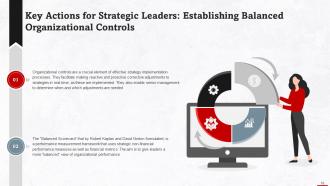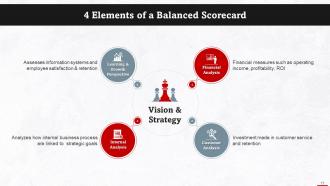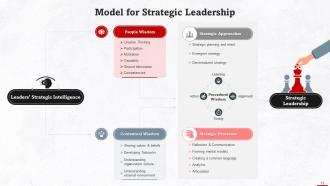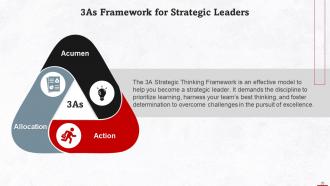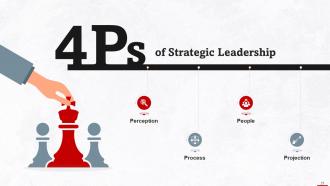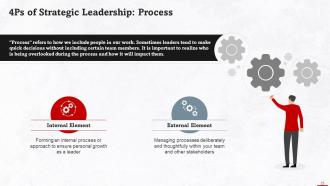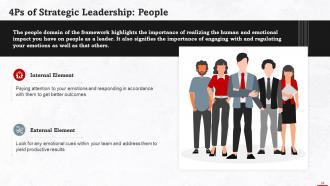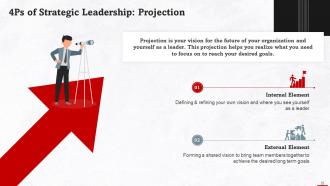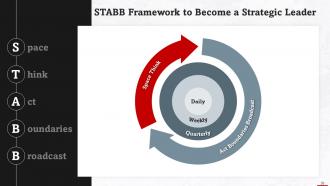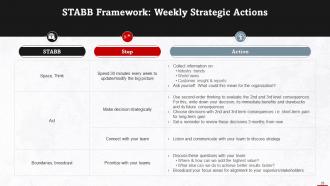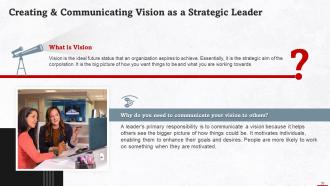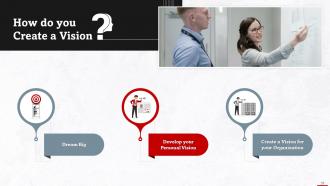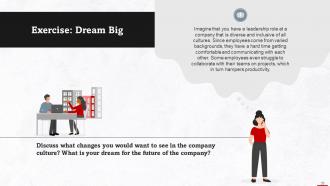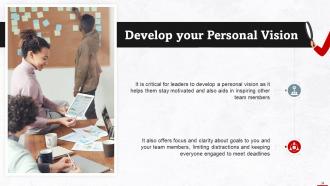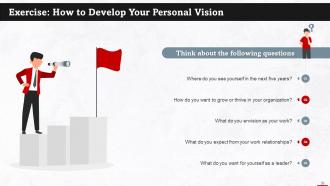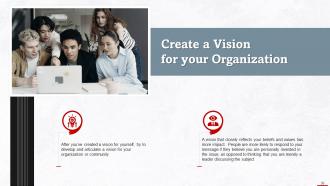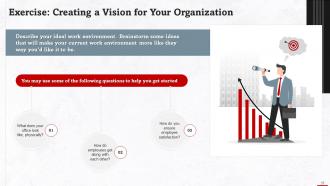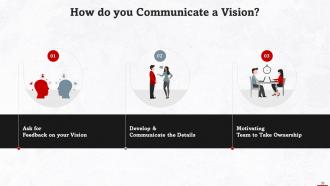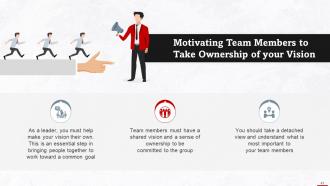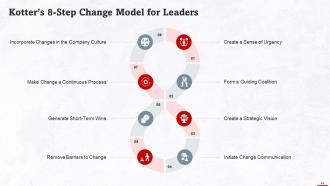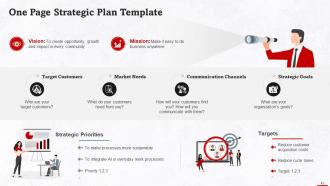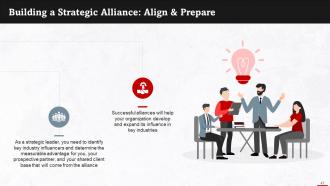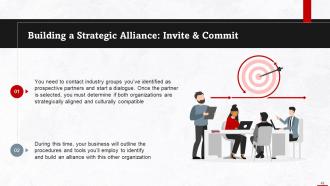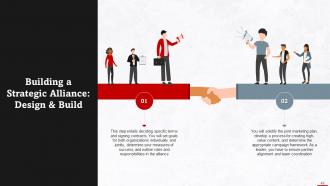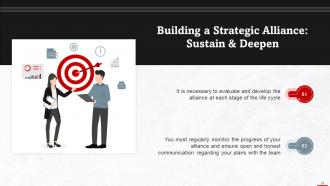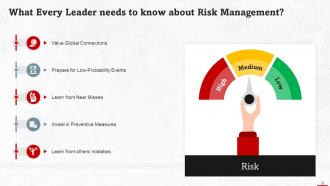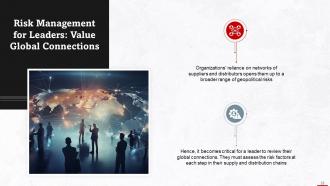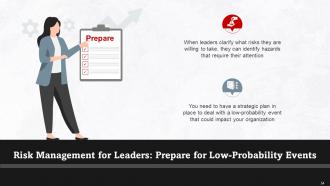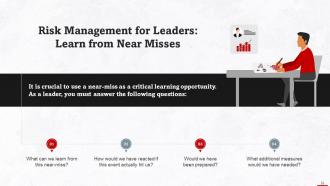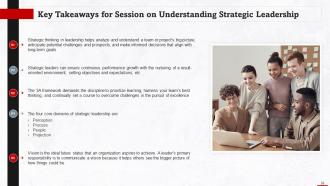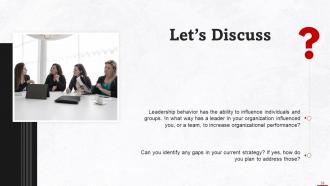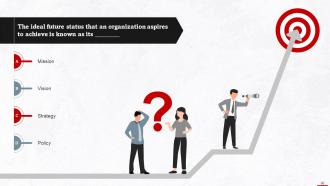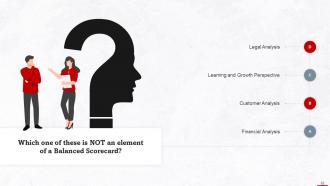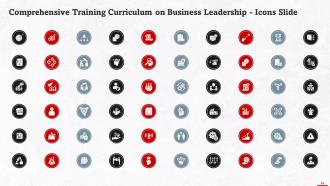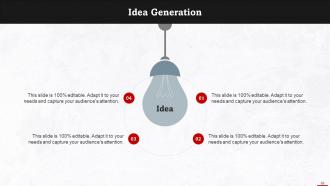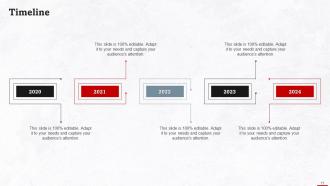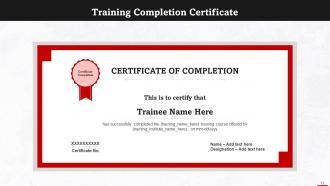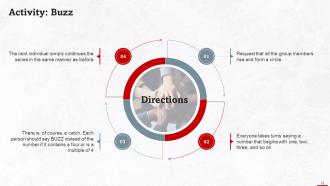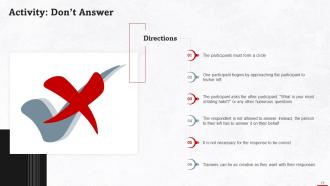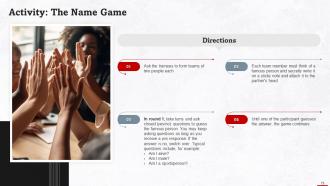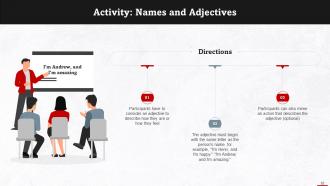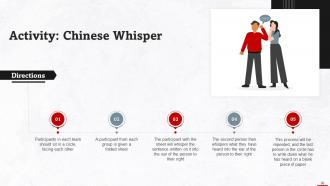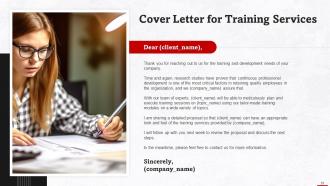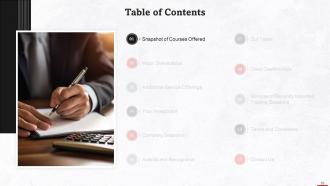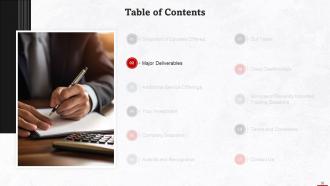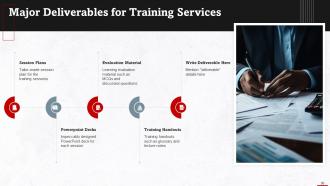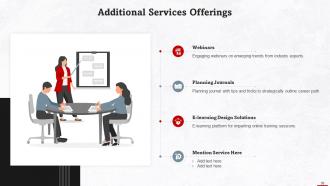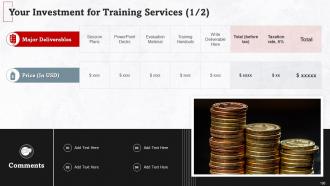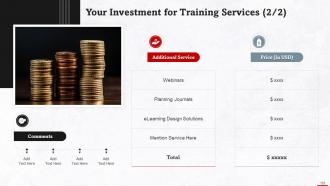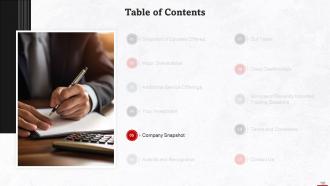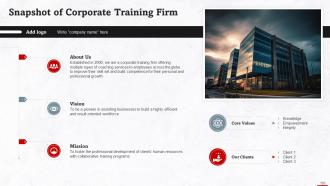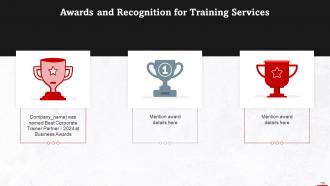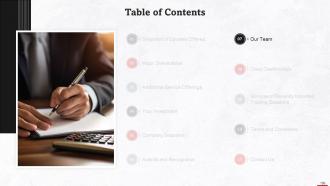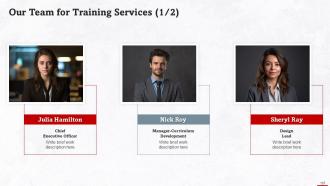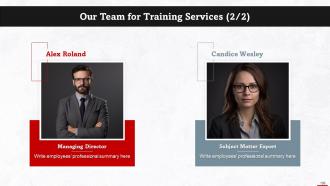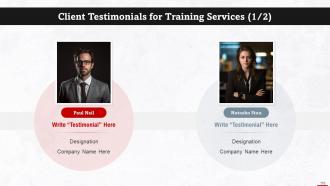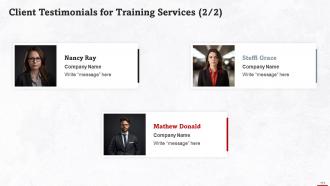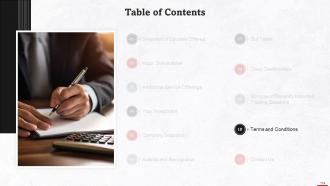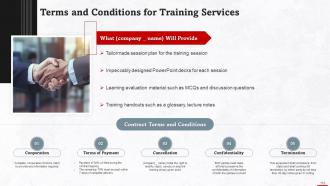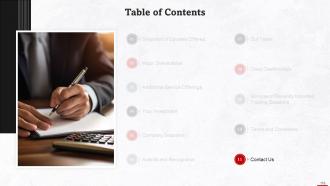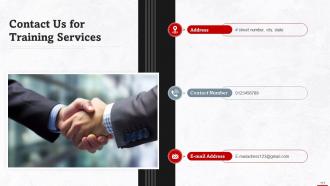Understanding Strategic Leadership Training Ppt
The PPT Module on Understanding Strategic Leadership is a comprehensive guide to mastering strategic thinking and leadership for impactful organizational influence. It commences with an overview of what strategic thinking entails and its significance for leaders, followed by an elucidation of essential strategic thinking skills. The PowerPoint Deck elaborates on the core principles and key actions necessary for strategic leadership, introducing a model for strategic leadership along with several frameworks, including the 3 As, 4P, and STABB, designed to enhance strategic leadership capabilities. It also covers creating and communicating the vision with practical exercises, leading strategic change, including Kotters 8-Step Model, and the dynamics of building strategic alliances and managing risks. Finally, it wraps up with Key Takeaways and Discussion Questions, designed to engage participants in thoughtful reflection and discussion.
You must be logged in to download this presentation.
 Impress your
Impress your audience
Editable
of Time
PowerPoint presentation slides
Presenting Training Deck on Understanding Strategic Leadership. This deck comprises of 117 slides. Each slide is well crafted and designed by our PowerPoint experts. This PPT presentation is thoroughly researched by the experts, and every slide consists of appropriate content. All slides are customizable. You can add or delete the content as per your need. Not just this, you can also make the required changes in the charts and graphs. Download this professionally designed business presentation, add your content and present it with confidence.
People who downloaded this PowerPoint presentation also viewed the following :
Content of this Powerpoint Presentation
Slide 3
This slide discusses strategic thinking for leaders. Strategic thinking in leadership helps analyze and understand a team or project's big picture, anticipate potential challenges and prospects, and make informed decisions that align with long-term goals.
Slide 4
This slide talks about the importance of strategic thinking for leaders. By forming a strategic approach, new leaders can establish a clear direction for their team and ensure everyone is working towards the same goals.
Slide 5
This slide highlights essential strategic thinking skills for leaders. These are: Problem-solving, planning & management, communication, and analytical skills.
Instructor’s Notes:
- Problem-Solving Skills: Strategic planning solves problems or addresses challenges, such as missed deadlines, inefficient workflows, etc. You must understand the problem and its potential solutions before implementing a strategy that addresses the challenge you're facing
- Planning & Management Skills: In addition to thinking of a solution, a strategy entails its implementation. Once data has been analyzed, the problem is understood, and a solution has been identified, you need strong planning and management skills to put everything together
- Communication Skills: Regardless of the size of your business, developing a strategy will involve effective communication skills. Strategic thinking is based on the capacity to effectively communicate complex concepts, interact with internal and external stakeholders, establish consensus, and ensure that everyone is aligned and working towards the same goal
- Analytical Skills: To formulate a strategy that helps your organization reach its objectives, you must be able to analyze a variety of inputs. These range from financial statements and KPIs to market conditions, emerging business trends, and internal resource allocation
Slide 6
This slide lists the principles of strategic leadership. These are: Distributing responsibility, ensuring honest & open communication, creating multiple ways for developing & testing ideas, making it safe to fail, creating opportunities for experience-based learning, hiring for transformation, offering access to other strategists, finding time to reflect, bringing your full self to work, and acknowledge leadership development as a continuous process.
Instructor’s Notes:
- Distribute responsibility: Strategic leaders should distribute responsibility across the organization. This will enable staff at all levels to make decisions and allow potential strategic leaders to see what happens when they take risks
- Ensure honest & open communication: Strategic leaders use open and honest communication to find and create new growth opportunities. Transparency encourages discussion and improvement of everyday practices
- Create multiple ways for developing & testing ideas: Developing and presenting ideas is a vital skill as it enables strategic leaders to connect ideas in an efficient manner to create value for the organization. By setting up ways for individuals to be innovative, leaders can help them learn to make the most of their creativity
- Make it safe to fail: Strategic leaders must foster acceptance of failure or willingness to admit to failure early in the processes of the organization. They should know how to address the stress of employees and how to recover from failure to try new ventures again
- Create opportunities for experience-based learning: Although conventional leadership training can develop good managerial skills, strategic leaders need the experience to live up to their potential. There should be opportunities within the organization that help strategic leaders understand certain situations better and promote growth of the organization
- Hire for transformation: Hiring decisions should be based on mindful considerations of abilities and experiences and should aim for diversity
- Offer access to other strategists: Strategic leaders should meet and work with their counterparts across the organization. This helps them learn from each other and explore ways of facilitating a more strategic environment in the rest of the enterprise
- Find time to reflect: One of the most effective ways to address challenges strategically is to observe & reflect on your current situation. Reflection enables you to learn from your mistakes, but it also gives you time to determine the importance of your aspirations
- Bring your full self to work: Strategic leaders must draw on their experience to tackle certain situations. They should consider their abilities, interests, experiences, and passions to develop innovative solutions
- Acknowledge leadership development as a continuous process: It is essential to realize that a strategic leader's learning and development is a continuous and never-ending process, irrespective of experience
Slide 7
This slide lists key actions for strategic leaders. These are: Determining strategic direction, creating & maintaining core competencies, developing human capital, sustaining organizational culture, emphasizing ethical practices, and emphasizing balanced organizational controls.
Slide 8
This slide talks about determining strategic direction as a leader. The development, articulation, and communication of a vision are crucial tasks of strategic leaders.
Slide 9
This slide depicts how to set strategic direction as a leader. These include: Considering your vision, reflecting on your organization’s mission, developing a plan, setting periodic, and quantifiable goals.
Slide 10
This slide gives information about creating and maintaining core competencies. People in leadership positions and senior management must ensure that the organization's core competencies are maintained, invested in, and developed over time to remain relevant.
Slide 11
This slide highlights how to continually improve your organization’s performance. Strategic leaders can ensure continuous performance growth by nurturing a result-oriented environment, setting objectives and expectations, etc.
Slide 12
This slide talks about developing human capital as a leader. Building human capital requires investment in training and development, and the senior management must provide the support and the budget necessary to make this happen.
Slide 13
This slide tells us about sustaining organizational culture as a strategic leader. Organizational culture is a source of competitive advantage. It offers the context in which the organization develops and implements its strategy and helps to regulate employees’ actions and attitudes.
Instructor’s Notes:
Additionally, the senior management must create selection and promotional policies and criteria that can promote desired behaviors.
Slide 14
This slide talks about emphasizing ethical practices as a strategic leader. The effectiveness of implementing an organization’s strategies improves when it is based on strong ethical foundations. A culture promoting ethical behavior is a must.
Slide 15
This slide discusses the ways a strategic leader can enforce ethical behavior in their organization. They can do so by framing & communicating a code of ethics, providing ethics training to employees, etc.
Slide 16
This slide gives information about establishing balanced organizational controls as a strategic leader. Organizational controls are a crucial element of effective strategy implementation processes. These facilitate making reactive and proactive corrective adjustments to strategies as they are implemented. They also enable senior management to determine when and what adjustments are needed.
Slide 17
This slide gives information about the elements of a balanced scorecard. These are: financial analysis, customer analysis, internal analysis, and learning & growth perspective.
Slide 18
This slide illustrates the influence of strategic leadership on the strategic management process.
Slide 19
This slide provides an overview of the Strategic Leadership Model. The elements of the model are: People’s wisdom, contextual wisdom, procedural wisdom, strategic approaches and processes.
Instructor’s Notes:
- People’s Wisdom: A strategic leader must identify the concerns and emotions of the people in the organization to understand what motivates individuals and how to work cooperatively with them
- Contextual Wisdom: Contextual wisdom enables strategic leaders to understand the uniqueness of their work environment & culture. Leaders can then propose solutions according to organizational needs, beliefs, and values
- Procedural Wisdom: Procedural wisdom focuses on the strategic learning cycle, which highlights strategic leaders' ability to harness the skills of their team members to take the organization to its desired goal
- Strategic Approaches and Processes: Strategic leaders must focus on creative thinking and encourage strategic conversations within the organization. This will ensure capability building within employees and allow thinking time to develop ways to attain organizational goals after taking an emergent approach
Slide 20
This slide depicts the 3As framework for strategic leaders. The 3As are: Acumen, action, and allocation. This framework demands the discipline to prioritize learning, harness your team’s best thinking, and toward to overcome challenges in the pursuit of excellence.
Instructor’s Notes:
- Acumen: Acumen for strategic leaders begin with ensuring that all your team members are responsible for contributing new and innovative ideas toward customer or organizational value
- Action: Action for strategic leaders begins with a more strategic approach to their time. Since meetings, on average, consume the largest proportion of a leader’s time, they need to be as productive and efficient as possible
- Allocation: Allocation for strategic leaders begins with active disengagement and delegation. To delegate means committing decisions, powers, and functions to others
Slide 21
This slide gives an overview of the 4P framework for strategic leadership. It mentions the four core domains for strategic leadership. These are: Perception, process, people, and projection.
Slide 22
This slide talks about perception as a key domain of strategic leadership. The perception domain of the framework highlights the importance of considering varied perspectives for a strategic leader. It is essential to be curious and to analyze multiple viewpoints before making a decision.
Slide 23
This slide discusses process as a key domain of strategic leadership. "Process" refers to how we include people in our work. Sometimes leaders tend to make quick decisions without including certain team members. It is important to realize who is being overlooked during the process and how it will impact them.
Slide 24
This slide talks about people as a key domain of strategic leadership. The people domain of the framework highlights the importance of realizing the human and emotional impact you have on people as a leader.
Slide 25
This slide discusses projection as a key domain of strategic leadership. Projection is your vision for the future of your organization and yourself as a leader. This projection helps you realize what you need to focus on to reach your desired goals.
Slide 26
This slide gives an overview of the STABB framework to become a strategic leader. STABB stands for Space to Think about the big picture, Act to execute, set Boundaries and Broadcast your actions. Make it a habit: daily, weekly, and quarterly.
Slide 27
This slide discusses daily strategic actions according to the STABB framework. It provides some questions to reflect on your situation, identify the problems, and prioritize your actions.
Slide 28
This slide talks about weekly strategic actions according to the STABB framework. Strategic leaders should spend about 30 minutes weekly to update the big picture view, and make decisions strategically using second-order thinking. They should then connect with their team to discuss strategies and broadcast them to stakeholders for alignment.
Slide 29
This slide discusses quarterly strategic actions according to the STABB framework. Strategic leaders should review their previous quarter by discussing what the team learnt. Leaders should then evaluate their current strategy and adjust it, if required. Finally, they should plan their work for the next quarter.
Slide 30
This slide tells us about vision and why it is important for a strategic leader to communicate their vision. Vision is the ideal future status that an organization aspires to achieve. A leader's primary responsibility is to communicate a vision because it helps others see the bigger picture of how things could be.
Slide 31
This slide lists three ways to create vision. These are: Dreaming big, developing a personal vision, and finally creating a vision for your organization.
Slide 32
This slide talks about the importance of dreaming big to create a vision. The first step is to dream big. Go ahead and dream about what you can do and what is achievable.
Slide 33
This slide presents an exercise on how to dream big.
Slide 34
This slide talks about the importance of developing a personal vision. It is critical for leaders to develop a personal vision as it helps them stay motivated and also aids in inspiring other team members.
Slide 35
This slide presents an exercise on how to develop a personal vision, based on a few questions.
Slide 36
This slide talks about the importance of creating a vision for your organization. A vision has more impact if it closely reflects your beliefs and values. People are more likely to respond to your message if they believe you are personally invested in the issue, rather than thinking you are merely a leader discussing the subject.
Slide 37
This slide presents an exercise on creating a vision for your organization.
Slide 38
This slide lists ways to communicate vision. These are: Asking for feedback on your vision, developing & communicating a vision, and motivating team members to take ownership.
Slide 39
This slide discusses the importance of asking for feedback on your vision. Considering viewpoints and incorporating some of those thoughts into your vision makes your belief in it stronger.
Slide 40
This slide talks about developing and communicating the details of your vision. After you get feedback from people, give your team members details on what your vision means on a daily basis. You must also tell them what steps you will take to get there, i.e., you must develop a plan. The better your strategy for reaching your vision, the more likely it is that people follow your lead.
Slide 41
This slide discusses the importance of motivating team members to take ownership of your vision. As a leader, you must help people make your vision their own. This is an essential step in bringing people together to work toward a common goal. Team members must have a shared vision and a sense of ownership to be committed to the group.
Slide 42
This slide presents an activity that facilitates leadership vision.
Slide 43
This slide provides an overview of leading strategic change. To lead through the process of change, a leader must initiate, strategize, and execute.
Instructor’s Notes:
- Initiate: Effective change leaders start by making the case for the change they seek. This can include assessing the business context, understanding the purpose of the change, forming a clear vision, and identifying a common goal
- Strategize: Successful leaders develop a strategy and a transparent action plan, which includes priorities, timelines, tasks, structures, behaviors, and resources
- Execute: Successful change leaders focus on getting critical people into key positions. They might also break big projects into smaller ones to get early victories and build momentum
Slide 44
This slide presents Kotter’s 8-step change model for leaders. The steps are: Create a sense of urgency, form a guiding coalition, create a strategic vision, initiate change communication, remove barriers to change, generate short-term wins, make change a continuous process, and incorporate changes in company culture.
Instructor’s Notes:
- Create a sense of urgency: A sense of urgency can provide the motivation to initiate a change implementation process. It’s vital to communicate the need, and reason, for any change to employees for them to see it as a possible solution to an existing problem
- Form a guiding coalition: Driving change isn’t a one-person job. Multiple leaders and senior management of the organization should work collaboratively to assess opinions and ideas
- Create a strategic vision: You must devise a change management plan outlining project milestones and deliverables. A documented vision helps you balance aspects of the change implementation and set more realistic timelines
- Initiate change communication: As a leader, you should often talk about your vision and change implementation plan and address any concerns the employees may raise transparently. You must also apply your vision to operational aspects, such as training and performance reviews
- Remove barriers to change: To drive change, you must determine factors that could hinder the implementation of change. Identify any obstacles as early as possible and depend on available resources to overcome them without disrupting other business areas
- Generate short-term wins: Implementing change is a lengthy and cumbersome process. You must acknowledge and celebrate short-term wins and achievements to keep your employees motivated
- Make change a continuous process: A change initiative can quickly fail if the individuals become complacent due to short-term success or get discouraged due to barriers. Therefore, leaders must establish SMART goals in advance and keep monitoring progress
- Incorporate change in company culture: Change initiatives demand behavioral change, and for a change to be fully adopted, it must be deeply rooted in an organization’s culture and processes. It’s critical to offer continuous employee training until the change becomes a habit
Slide 45
This slide illustrates a strategic plan template for leaders.
Slide 47
This slide offers information about align & prepare, which is the first step of building a strategic alliance. As a strategic leader, you need to identify the key industry influencers and determine the measurable advantage for you, your prospective partner, and your shared client base that will come from the alliance.
Instructor’s Notes:
As a strategic leader, you must be a strong negotiator and problem-solver who encourages innovation in the workplace.
Slide 48
This slide talks about invite & commit, which is the second step of building a strategic alliance. You need to contact industry groups you’ve identified as prospective partners and start a dialogue. Once the partner is selected, you must determine if both organizations are strategically aligned and culturally compatible.
Slide 50
This slide tells us about forming a go-to-market plan as a part of building a strategic alliance. Once you have finalized your alliance framework, you’re ready to build an alliance engagement plan and go to market.
Slide 51
This slide talks about sustaining your organization’s strategic alliance. It is necessary to evaluate and develop the alliance at each stage of the life cycle.
Slide 52
This slide highlights major aspects of risk management that every strategic leader should know. These are: Value global connections, prepare for low-probability events, learn from near misses, invest in preventive measures, and learn from others’ mistakes.
Slide 53
This slide talks about appreciating your organization’s global connections as a part of effective risk management. Leaders must assess the risk factors at each step in their supply and distribution chains
Slide 54
This slide tells us the importance of preparing for low probability events as part of effective risk management. Leaders must devise a strategic plan to deal with any low-probability event that could impact their organization.
Slide 55
This slide talks about learning from near-misses as a part of effective risk management. It is crucial to use a near-miss as a critical learning opportunity.
Slide 56
This slide tells us the importance of investing in preventive measures as a part of effective risk management. Many organizations are reluctant to invest in preventive measures due to their high upfront costs, downplaying the long-term benefits of otherwise sensible investments.
Slide 57
This slide talks about learning from others’ mistakes as part of effective risk management. Directors, executives, and managers should be wary of the threats or incidents that affect other businesses. It is beneficial to learn from other people’s mistakes when it comes to risk.
Slide 58
This slide summarizes the session on Strategic Leadership and lists its key takeaways.
Slide 76 to 89
These slides contain energizer activities to engage the audience of the training session.
Slide 90 to 117
These slides contain a training proposal covering what the company providing corporate training can accomplish for the client.
Understanding Strategic Leadership Training Ppt with all 126 slides:
Use our Understanding Strategic Leadership Training Ppt to effectively help you save your valuable time. They are readymade to fit into any presentation structure.
-
“Excellent service from the customer support team when I wanted a slide that was a bit different from those on their standard menu. Super helpful.”
-
Wide collection of templates available. SlideTeam has made it easier to create presentations in just a few minutes.














